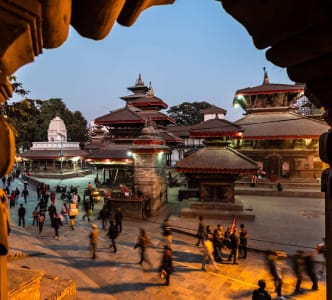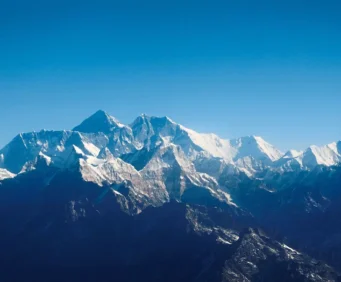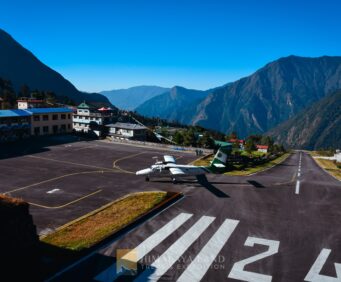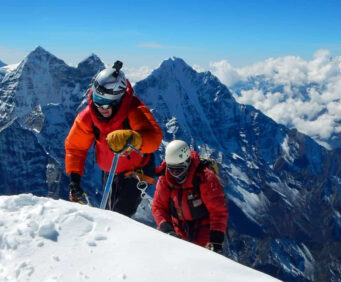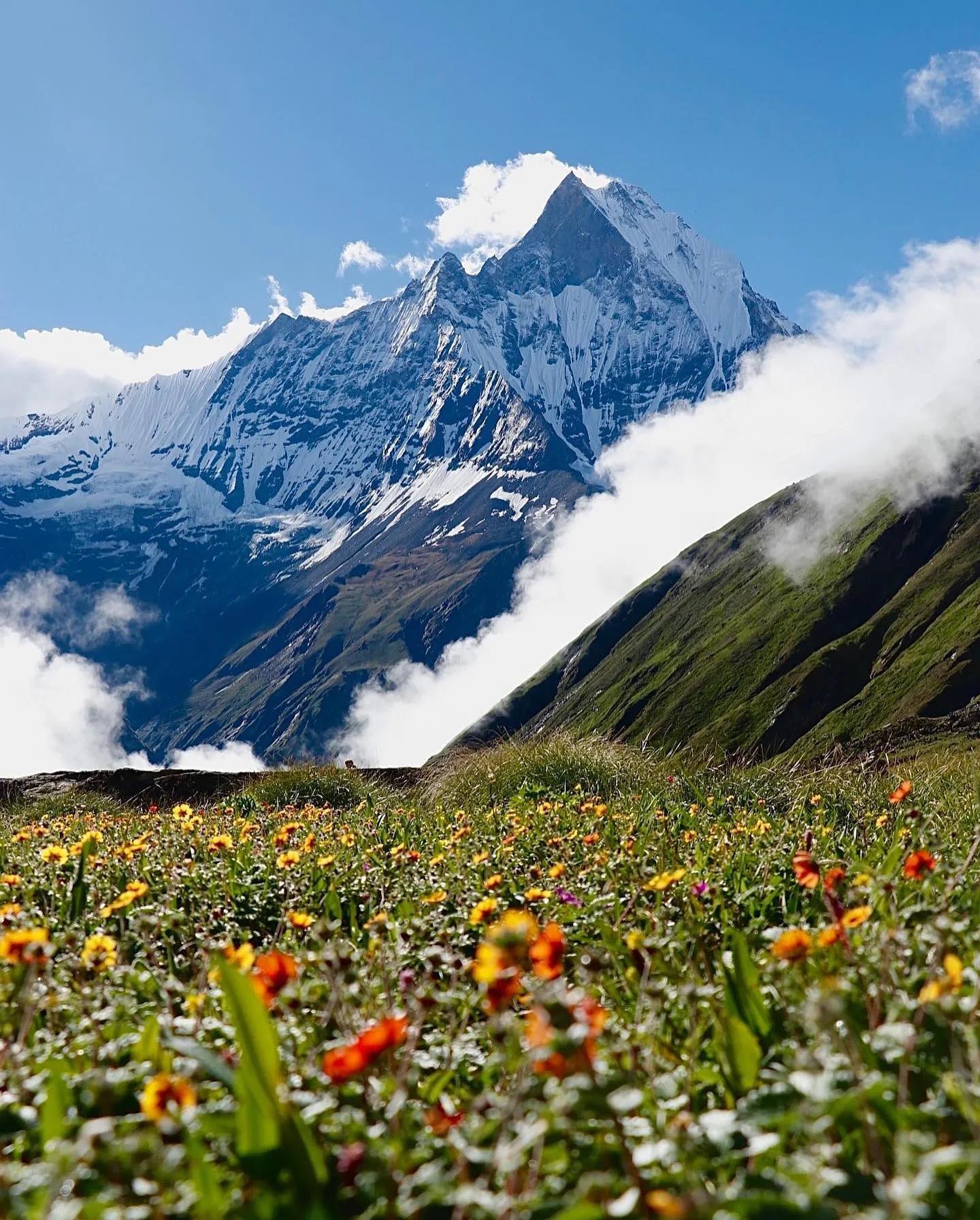
Best Monsoon Treks in Nepal for Beginners
16th June, 2024 - Posted By: Himalayan AbodeNepal, known as the ‘home of the Himalayas’, is one of the most famous destinations where people visit and conquer the beauty through treks. Although everyone desires to trek on various terrains during the dry season many appreciate the beauty of monsoon from June to September. The vegetation, trails and meadows, forest deodars, and enchanting waterfalls give the trekkers a splendid experience. Here is a list of the most popular introductory Monsoon Treks in Nepal for beginners.
1. Ghorepani Poon Hill Trek
Duration: 4-5 days
Maximum Elevation: It ranges from 2,800 meters (Lupra) to 3,210 meters (Poon Hill).
Difficulty: Easy to Moderate
The Ghorepani Poon Hill trek is one of the famous short treks and Monsoon Treks in Nepal where tourists get the opportunity to see the spectacular sunrise over the Annapurna and Dhaulagiri Region. The landscapes through which the trail goes include open and dense rhododendron forests, picturesque villages, and geographically stunning locations.
During the monsoon, the forest fills with blooming flowers and vibrant green foliage. Despite this, the trek is well-defined and there are numerous places for ac. moderation so it is preferred for new trekkers.
Highlights:
- Truly breathtaking scenery especially the sunrise from Poon Hill
- Traditional Gurung villages
- Dense rhododendron forests
2. Nagarkot Chisapani Trek
Duration: 3 days
Maximum Elevation: It is 2,175 meters in Nagarkot Nepal.
Difficulty: Easy
Overall, the Nagarkot Chisapani Trek is a relatively short and easy trek that departs from within proximity of Kathmandu. From Sundarijal beginning, the trek goes through Shivapuri National Park, which is the natural habitat of trees and animals.
The trail leads onwards to Chisapani and subsequently to Nagarkot, It is another famous hill resort for a close view of the hills of the Himalayan range. This trek can be best described as easy for people with little experience and seeking a relatively short hike but with lots of stunning views.
Highlights:
- Interest in viewing the picturesque scenery of the Langtang and Everest ranges.
- Shivapuri National Park
- It is famous for having a clear view of both sunrise and sunset.
3. The Annapurna Base Camp Trek(ABC)
Duration: 7-12 days
Maximum Elevation: starting from the low range of 1,130 meters to the highest of 4,130 meters at Annapurna Base Camp.
Difficulty: Moderate
Although slightly longer and more strenuous than the other treks mentioned here, novice hikers in good physical health can comfortably complete the Annapurna Base Camp trek. During the monsoon period, the landscapes are green and beautiful but fewer people hike on the trail due to the extreme weather and humidity.
The trekking route features nature treks and provides opportunities to see cultural heritage sites, including terraced fields, bamboo forests, and the traditional houses of the Gurung and Magar ethnic groups
Highlights:
- Annapurna Sanctuary
- Machapuchare (Fishtail) Base Camp
- Diverse ecosystems
4. Langtang Valley Trek
Duration: 7-8 days
Maximum Elevation: To the small town of Langtang, its peak measures 3,870 meters at Kyanjin Gompa.
Difficulty: Moderate
The Langtang Valley Trek is suitable for those travelers who would like to have some challenges and overcome alone time with the inability to find many tourists. It begins at Syabrubesi and then passes through forests filled with Chandanbari and Langtang Rivers and several fairy meadows to Kyanjin Gompa.
The monsoon brings back the flowers decorating the land and the waterfalls which make the view in the region beautiful. Also, the Langtang region is less crowded during March thus offering those trekking a quiet time.
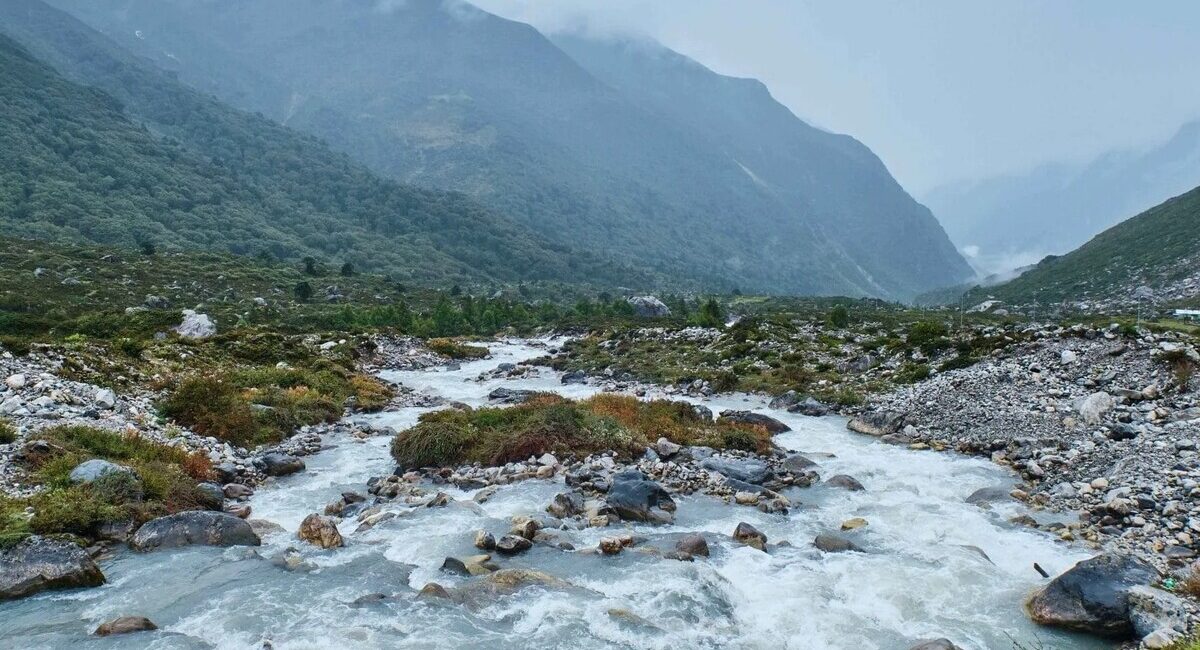
Highlights:
- Kyanjin Gompa and Tserko Ri are two of the most popular trekking routes around the Sean.
- Langtang National Park
- Local Tamang culture
5. Mardi Himal Trek
Duration: 5-7 days
Maximum Elevation: It can reach even up to 4,500 meters as in the case of Mardi Himal Base Camp.
Difficulty: Moderate
The Mardi Himal Trek is an unbeaten path trip in the Annapurna Region which provides sweet vistas of Mardi Himal, Machapuchare, and Annapurna. The trail covers an area of forest, pastoral, and ethnographic zone with the local hunter-gatherer tribes and mountain pastures. It is one of the most popular Monsoon Treks in Nepal.
This is far less crowded as an area even in peak trekking seasons, and the monsoon especially accentuates the forest route with mist and a rich range of colors.
Highlights:
- Mardi Himal Base Camp
- Views of Machapuchare (Fishtail)
- Secluded trekking experience
Tips for trekking in Monsoon in Nepal and required things for those times.
- Weather Preparedness: Although the weather is generally warm all year round, it is very wet during monsoon and leeches are also present during this time. Bring along a light raincoat, and waterproof bag to cover your rucksack and leech repellent.
- Footwear: Trekking shoes or boots that are waterproof and have adequate grip on the bottom as the terrains can be very slippery, are necessary.
- Stay informed by following weather reports, and be aware that some trails may frequently close or experience landslides.
- We recommend hiring a local guide and porter to explain what you see and help with your belongings.
- Permits and Regulations: Make sure that you obtain the right trekking permits including TREKKS (Trekkers’ Information Management System) and park fees.
Tips for Preparing for Monsoon Treks in Nepal
Gear and Clothing
- Rain Gear: Invest in a high-quality raincoat, rain pants, and a waterproof backpack cover.
- Footwear: Waterproof trekking boots with a good grip are essential to handle wet and slippery trails.
- Clothing: Pack quick-dry clothing and avoid cotton. Layering is key to managing varying temperatures.
- Backpack: A waterproof or rain-covered backpack to keep your belongings dry.
Safety and Health
- Hydration: Carry a water purification system or tablets as natural water sources may be contaminated.
- First Aid Kit: Basics things like bandages, antiseptics, and medications for common ailments.
- Leech Protection: Carry salt or leech repellent to deal with leeches commonly found in monsoon conditions.
- Insect Repellent: Mosquito repellent is necessary to avoid insect bites.
- Weather Updates: Regularly check weather forecasts and prepare for sudden changes.
- Local Guides: Hiring a local guide can provide valuable assistance and knowledge about trail conditions.
- Maps and Navigation: Carry a detailed map and a GPS device to navigate through unclear or washed-out trails.
- Acclimatization: Although monsoon treks generally have lower altitudes, ensure you acclimatize properly to avoid altitude sickness.
Packing Essentials
- Waterproof Bags: Use waterproof bags or zip-locks for important documents and electronics.
- Snacks: Pack energy bars, nuts, and dried fruits for quick energy boosts.
- Trekking Poles: Helpful for balance on slippery trails and reducing knee strain.
Logistics
- Permits: Obtain necessary permits like TIMS and national park entry permits beforehand.
- Accommodation: Book accommodations in advance, especially during peak monsoon season.
- Travel Insurance: Ensure your insurance covers trekking and emergency evacuations.
Mental Preparation
- Patience: Be prepared for delays and changes in your trekking itinerary due to weather conditions.
- Flexibility: Stay flexible with your plans and open to adjusting your route if needed.
- Positive Attitude: Embrace the monsoon’s beauty and enjoy its unique experience.
Can beginners safely enjoy the monsoon trekking experience in Nepal?
Yes, they can have fun if they pay attention to advice and select the appropriate trek package.
Trekking in Nepal can be challenging varying depending on the specific trail/route, the time and season, and an individual’s physical fitness levels.
To trek in Nepal offers us many choices ranging from a saunter in the picturesque valleys of the country to facing a rigorous mountainous trek on the steep and high altitude passes.
There are some parameters that one could consider when speaking of difficulty level concerning the treks in Nepal, the general length of a trek; the height of a trek; the condition of a trail; & fitness level/experience of the Trekker.
Many including the Ghorepani-Poonhill, and Nagarkot Chisapani treks can be completed in 3-7 days and are good for beginners. Because the paths are fairly easy and there are what can be considered low altitudes that can easily result in AMS. These are also the best Monsoon Treks in Nepal. These two treks are technically low: many people with average health conditions can pay $ and get the beauty of the Nepalese geographic and cultural complexities.
The treks range from one week to half a month with moderate heights measuring up to 4,500 meters; treks like the Annapurna base camp and the Langtang Valley trek. These treks provide more difficult terrains and longer walking time per day; thus clients should be in good health and should have had few other adventure trekkings as acute mountain sickness may be crucial.
However, more demanding treks, such as the Everest Base Camp trek and the Annapurna Circuit, which last 15 days or more, are considered tougher.
This is intended to grant participants in these high-altitude treks the right to outstanding physical and mental health because they often require crossing the boundaries of trees and traversing relatively long distances across difficult landscapes.
The trail conditions are equally important in a trek which helps to decide the difficulty level of the trek. Easy trekking trails for beginners include; the Ghorepani Poon Hill Trek and the Annapurna Base Camp Trek because they have well-maintained paths, comfortable lodges, and sophisticated toilet facilities en route.
Whereas easy-to-moderate trails such as Annapurna Circuit or Nar-phu Valley can be undertaken for small trekking groups that do not need many facilities,
Manaslu Circuit or Upper Mustang trails are moderate to difficult because one often has to get off track and the trekking is longer with more additional elevation.
For the most experienced trekkers, the difficult treks including the Mount Everest Three Passes and Kanchenjunga Circuit treks involve some tasks of high technicality with steep drops and heights, and bad weather common in high altitudes making the treks quite challenging for those with prior experience in such endeavors.
All in all, trekking in Nepal can be easily initiated depending on the difficulty level from easy to extremely challenging. For those who have little experience in trekking and those who wish for less of a hike, there are many short and lightly graded treks Many are very picturesque and beautiful but lesser known for their toughness, For the more experienced trekkers who wish to be challenged there are many high difficulty and long treks at high altitude many which are well known worldwide and include:
The most important factors among visitors to minimize risks when trekking in Nepal include:
- Proper preparation
- Proper acclimatization
- Realistic expectations agenda
Conclusion
Monsoon treks in Nepal now offer a remarkable journey due to low crowd density and steep roads. All the following trekking are appropriate for the learners as they also enjoy adventures, scenic views of natural beauties and even learn about diverse cultures of the people.
A rainy season hiking is not a sorry adventure but an undertaking on own excursion which is certainly worth a try later if one follows the guide on how to prepare for the rainy season, to later.
Recent Posts
